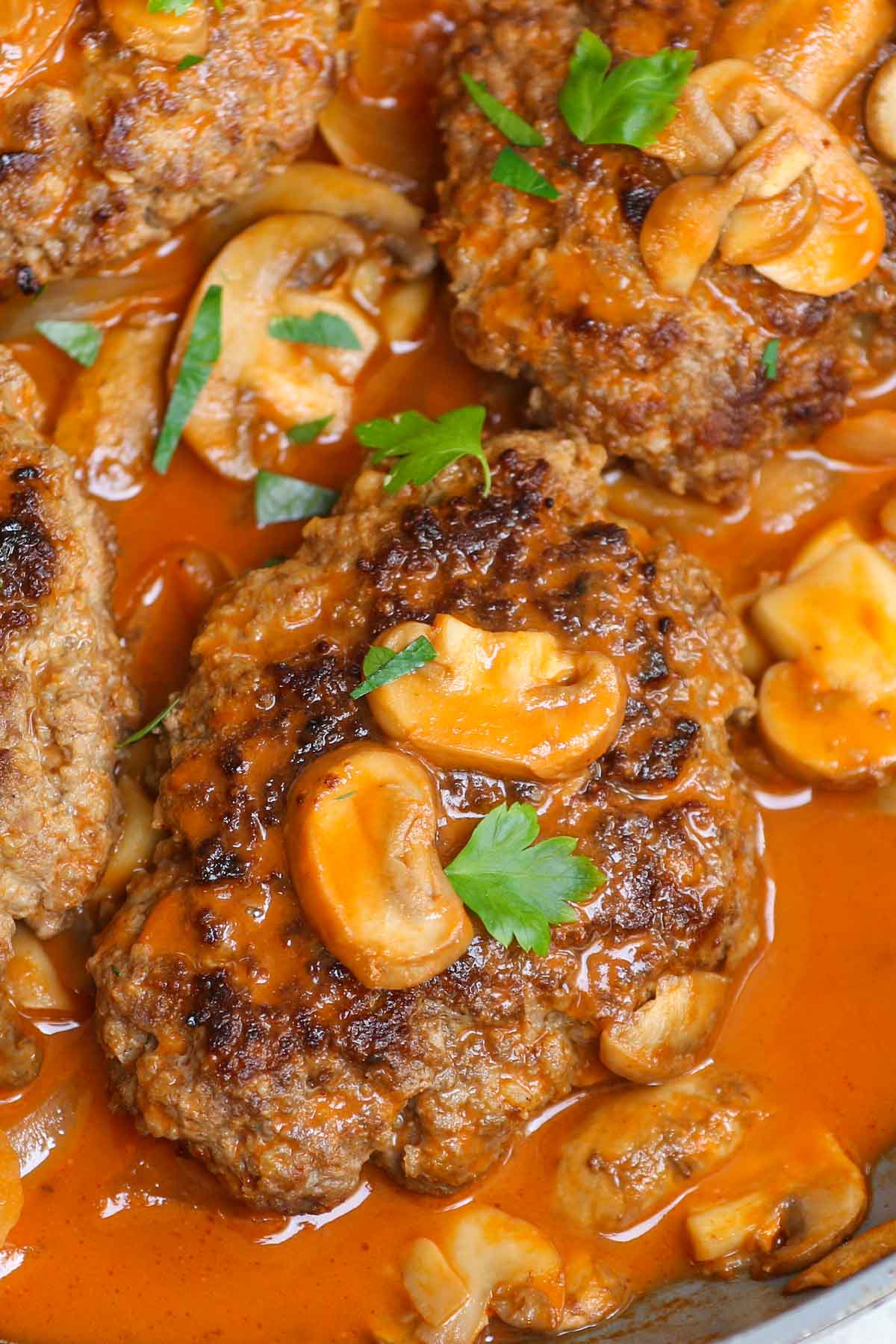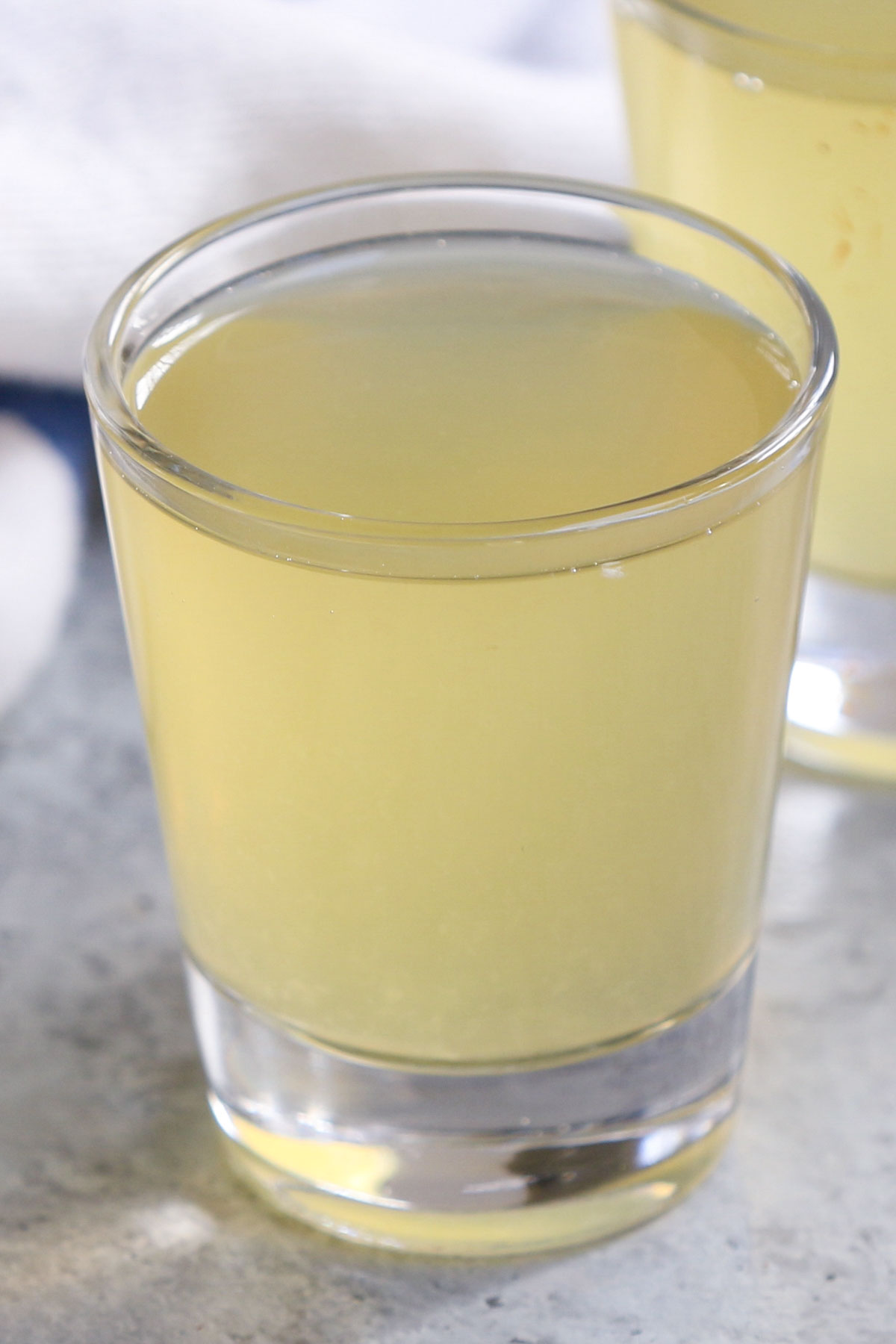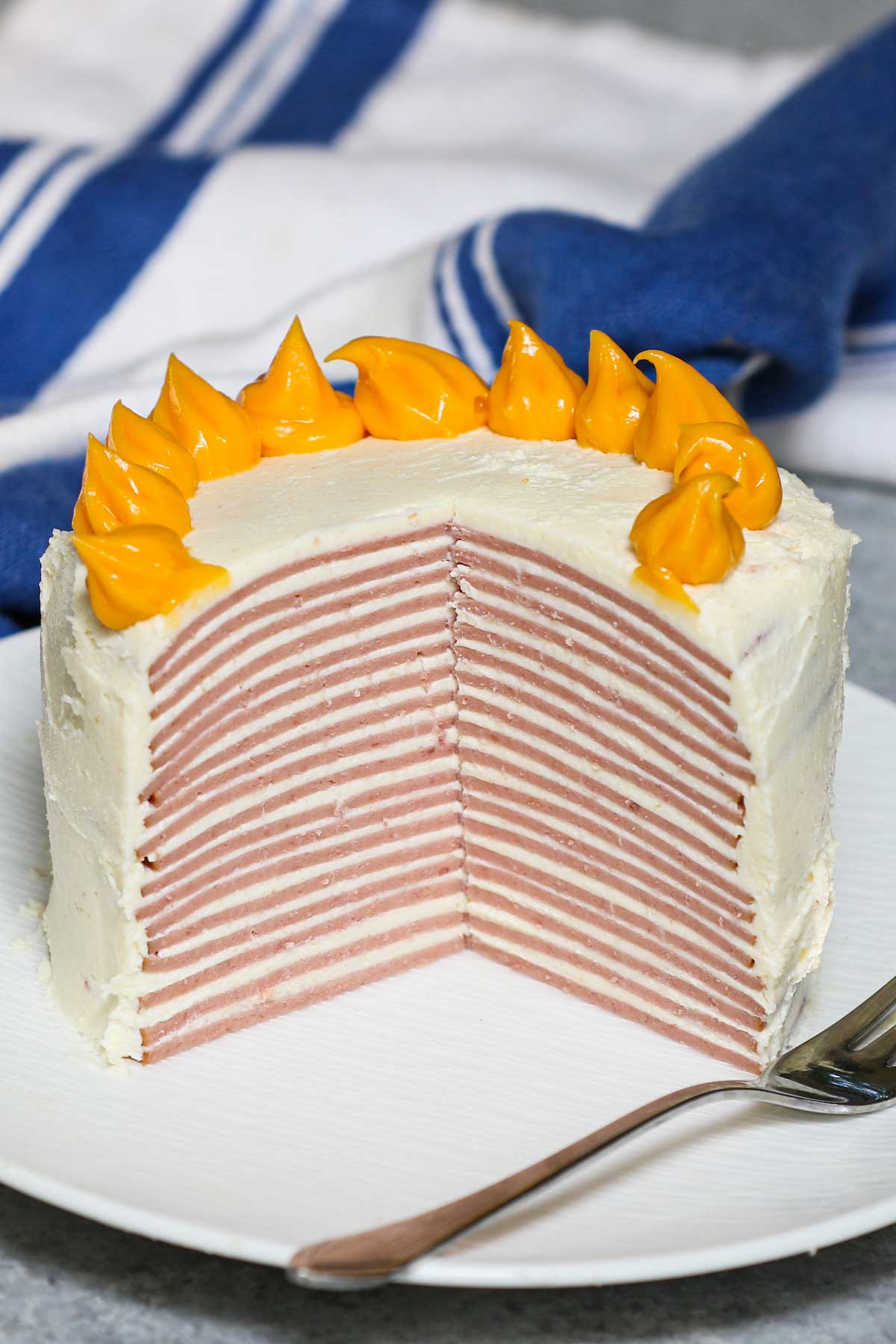Scallops Temperature Guide
on May 03, 2022
This post may contain affiliate links. Please read my disclosure policy.
The key to delicious scallops is ensuring they’re not overcooked. Perfectly cooked scallops are sweet and succulent but when overcooked, scallops become dry and rubbery. In this post, we’re sharing some tips on the right scallop temperature and how to cook them so that they’re sweet, tender, and delicious every time.
Scallops are a delicious type of shellfish that are buttery and tender when properly cooked. They can be prepared in a number of ways, and pair well with rice, pasta, and vegetables.
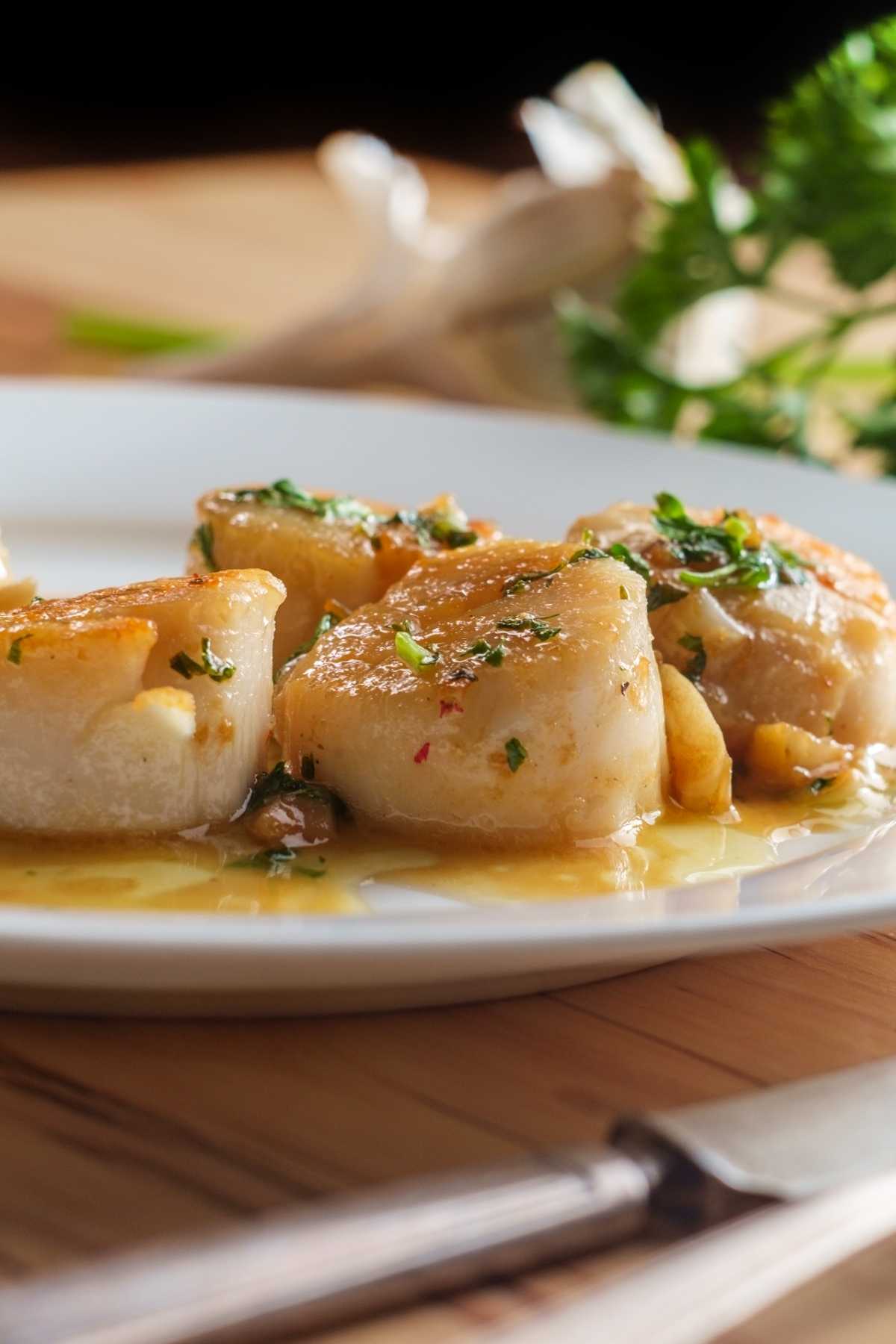
What is the Proper Internal Temperature for Scallops?
A scallop will be perfectly cooked when an instant-read thermometer inserted into the center reaches 120°F. When scallops are removed from the heat, they will continue to cook, bringing the internal temperature to a final and ideal temperature between 125°F to 130°F.
How to Prepare Scallops
Pat the scallops dry and place them in the fridge until ready to cook. If cooking a large amount of scallops, don’t overcrowd the pan. It’s best to cook them in batches.
How to Cook Scallops
- Heat the butter and oil in a cast iron over medium-high heat. Once hot, add scallops to the pan.
- Allow the scallops to cook for 1-2 minutes before checking underneath them to see how brown they have become. If they are not yet well browned, continue cooking.
- When scallops are golden brown on one side, flip them.
- Allow the scallops to cook on the second side while monitoring their temperature with a fast and accurate thermometer.
- Once the lowest measured temperature in each scallop reaches 120°F, remove it from the pan and set it aside on a platter. Repeat until all the scallops in the batch are fully cooked.
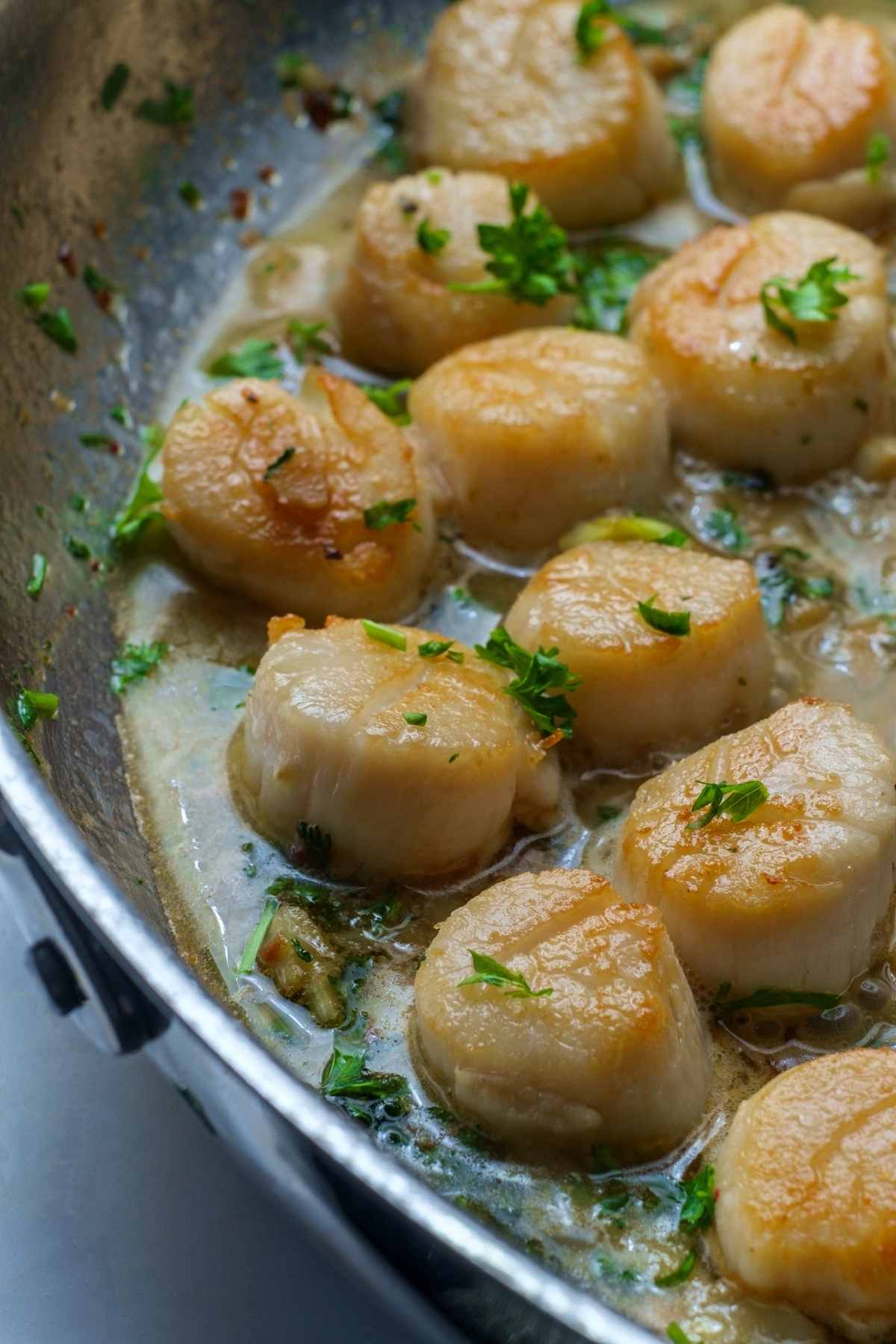
How Long to Cook Scallops
Cooking time will vary based on the cooking method and the size of the scallops. As an example, scallops cooked on the stove in a hot skillet with butter or oil will be perfectly cooked and ready to eat in about 5 minutes.
How to Know When Scallops Are Done: Use an Instant Read Thermometer
An instant-read thermometer is the most reliable way to check for the doneness of scallops. Insert the probe of the thermometer into the center of the scallop and slowly remove it while checking the display. The target temperature is 120°F. You’ll need to check each scallop, so keep that in mind if you’re making a large amount.
Tips to Avoid Overcooking Scallops
- When searing, check the scallops 1–2 minutes after placing them into the pan to ensure they’re browning, not scorching.
- If the scallops aren’t browning, continue to cook until they are seared, golden brown, and have a nice crust. Turn the scallops and repeat on the other side.
- Note that you’ll have to reduce the heat if the oil begins to smoke. You don’t want the scallops to scorch or burn.
- When the scallops are done, immediately remove them to a plate. Overcooked scallops will be tough and rubbery.
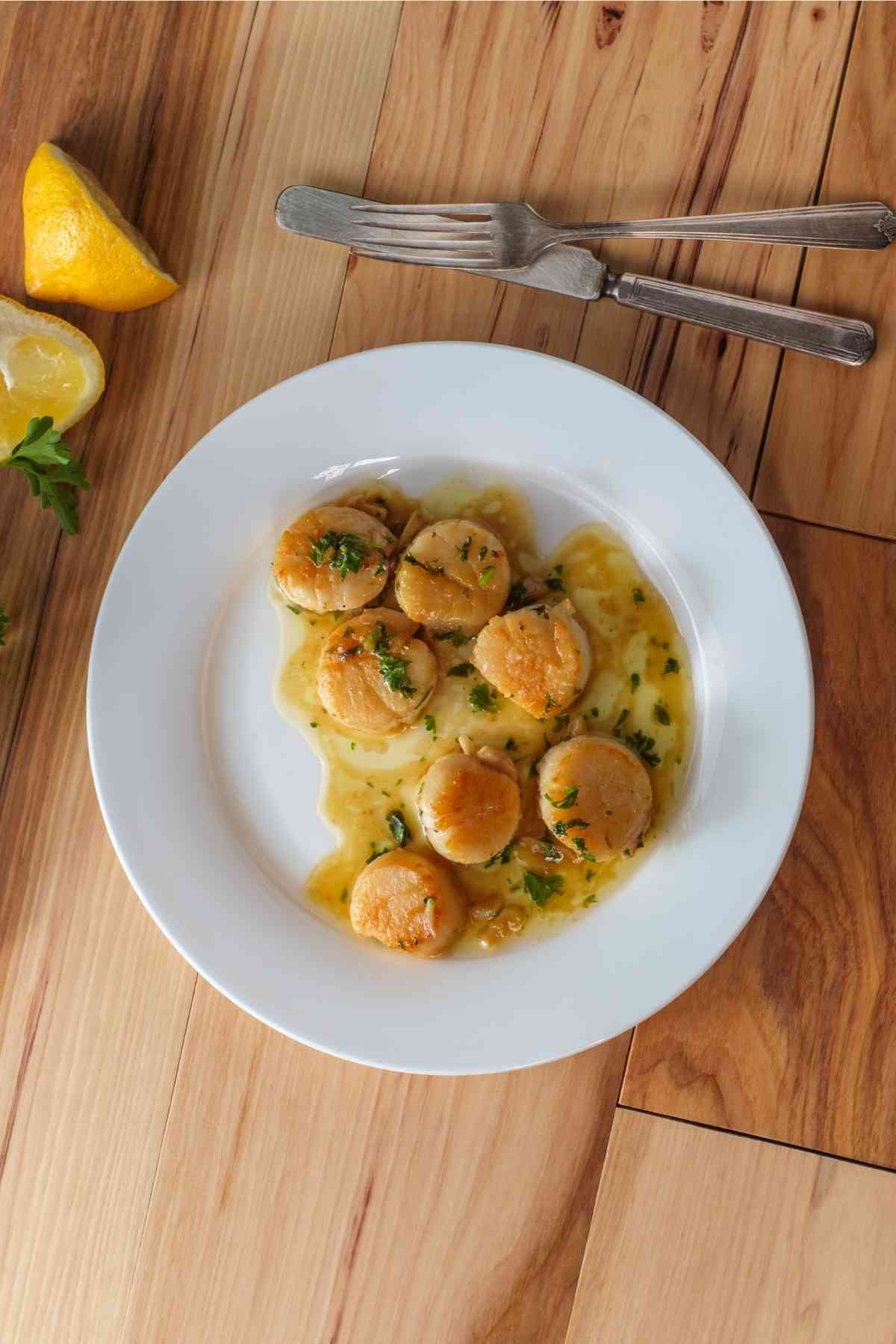
Frequently Asked Questions
How Hot Should My Pan Be When Cooking Scallops?
Seared scallops need high heat to develop a crust. Place a pan over medium-high heat and immediately add the oil. When the oil reaches 450°F or becomes shimmery, it’s time to add the scallops.
Do I Need to Dry Scallops Before Searing?
Yes, pat the scallops dry with paper towels before adding them to the pan. This will create an even sear and golden brown color.
What to Serve with Scallops
With their subtle flavors, scallops go well with just about anything you can imagine! Salads, veggies, mashed potatoes, pasta — you name it!
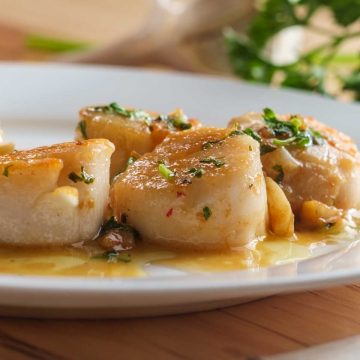
Perfect Seared Scallops Recipe
Ingredients
- 1 pound scallops
- 2 Tbsp unsalted butter
- 1 Tbsp vegetable oil
- 1/2 cup dry sherry
- salt, to taste
Instructions
- Prepare the scallops by removing any feet and by patting them dry.
- Heat the butter and oil in a cast iron over medium-high heat.
- Once hot (about 450°F), add scallops to the pan, as many as you can handle without crowding them. Work in batches if necessary.
- Allow the scallops to cook for 1-2 minutes before checking underneath them to see how brown they have become. If they are not yet well browned, continue cooking.
- When scallops are golden brown on one side, flip them.
- Allow the scallops to cook on the second side while monitoring their temperature with a fast and accurate thermometer.
- Once the lowest measured temperature in each scallop reaches 120°F, remove it from the pan and set it aside on a platter. Repeat until all the scallops in the batch are fully cooked.
Make the sauce
- Pour out the excess oil from the pan and place it over the heat again.
- Carefully pour the sherry into the pan to deglaze it.
- Simmer the sherry down to a few tablespoons of liquid, and add salt to taste. Let this cook for just a few moments and pour into a container.
- Plate the scallops and drizzle with the sauces, being sure each dish gets some capers. Serve!
Nutrition information provided is an estimate only and will vary based on ingredient brands and cooking methods used.
